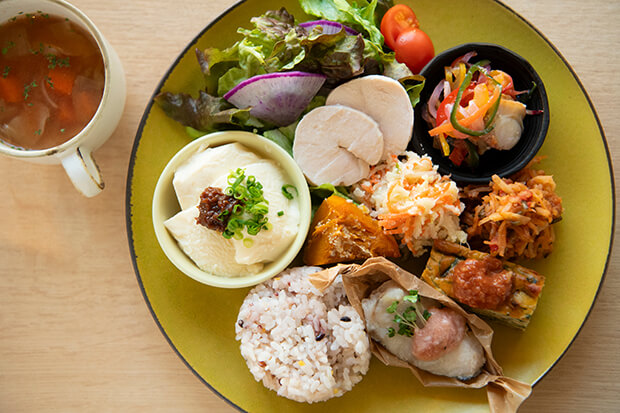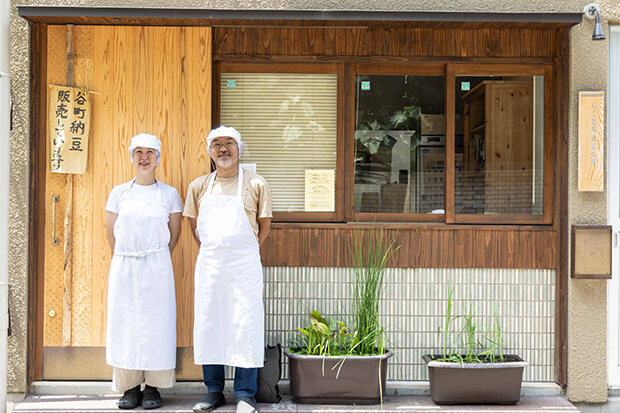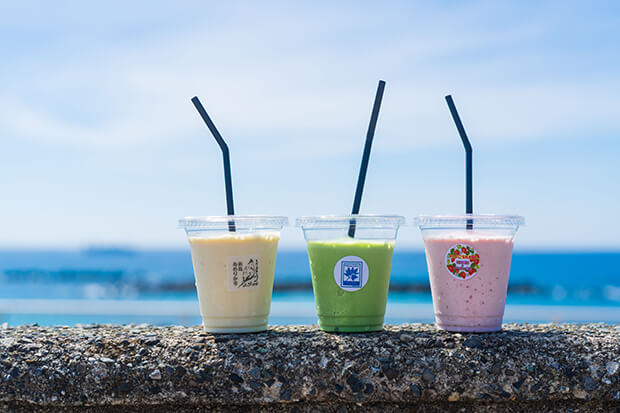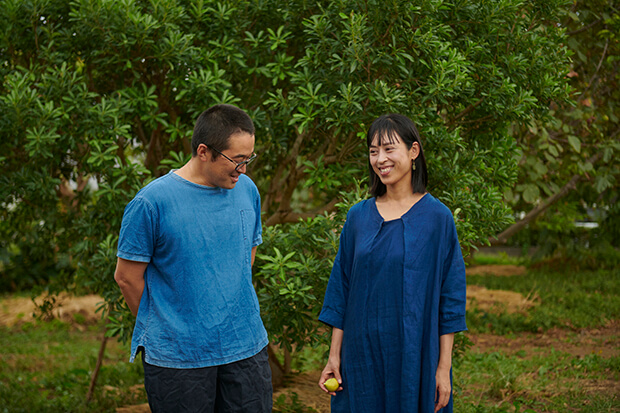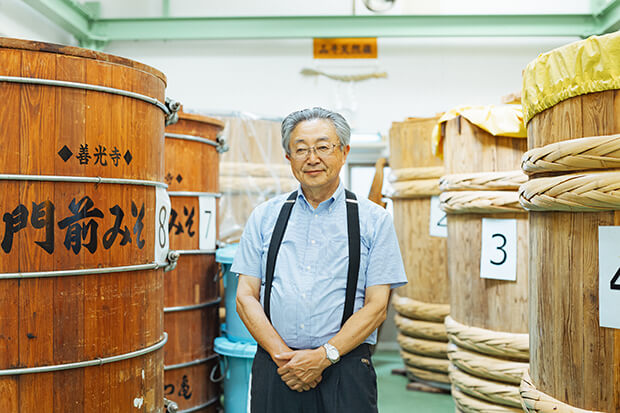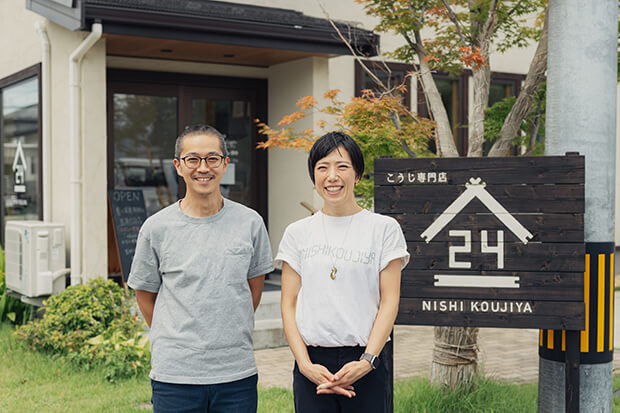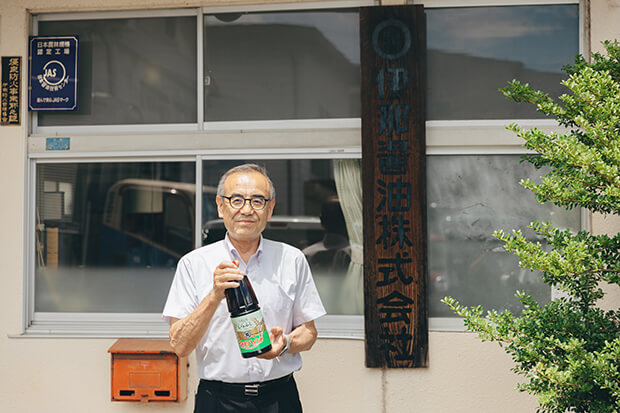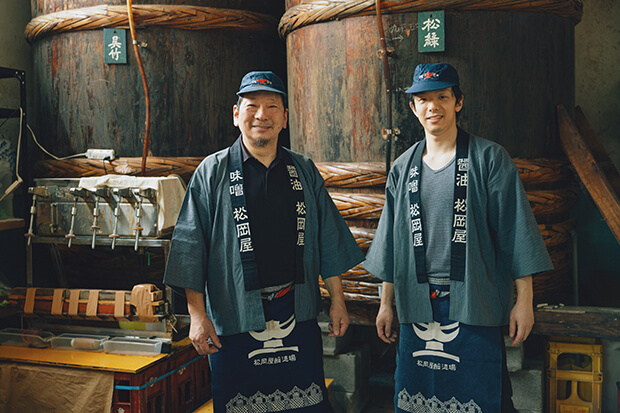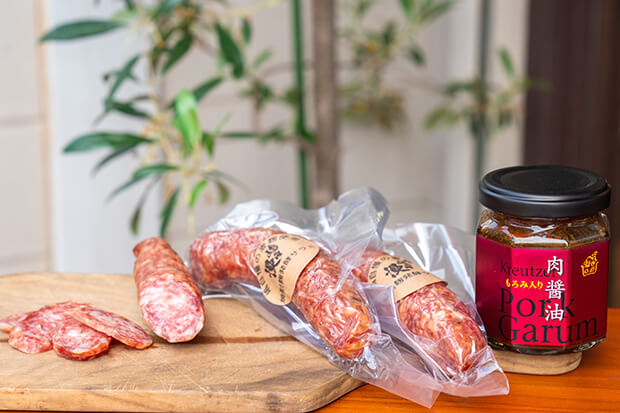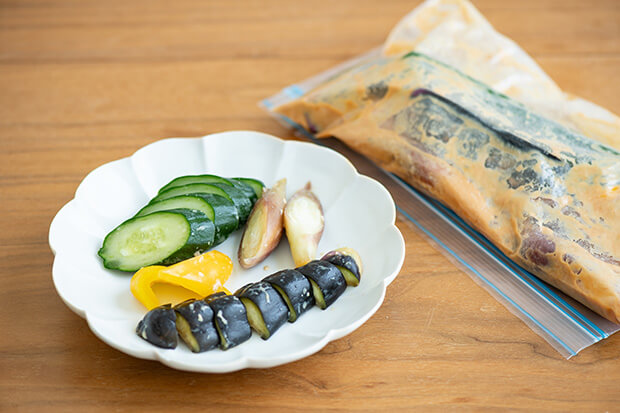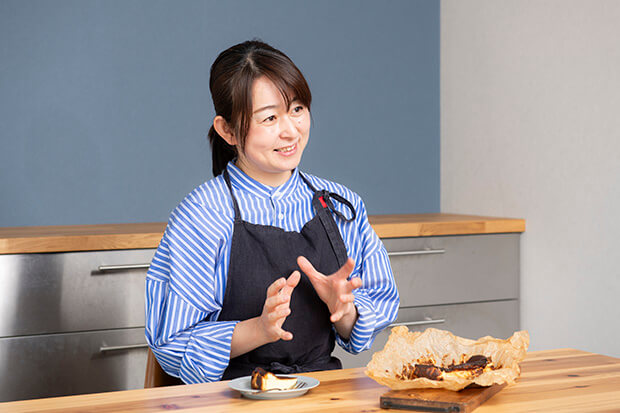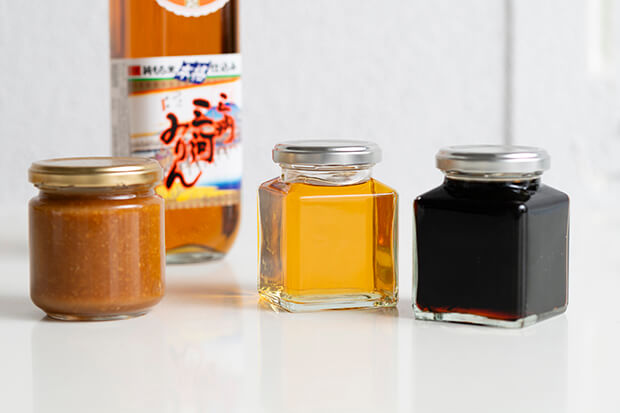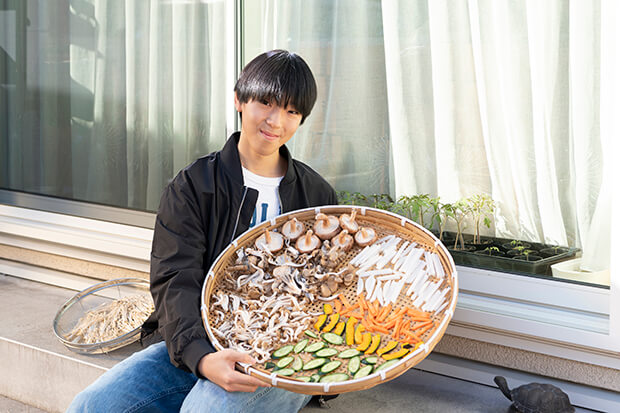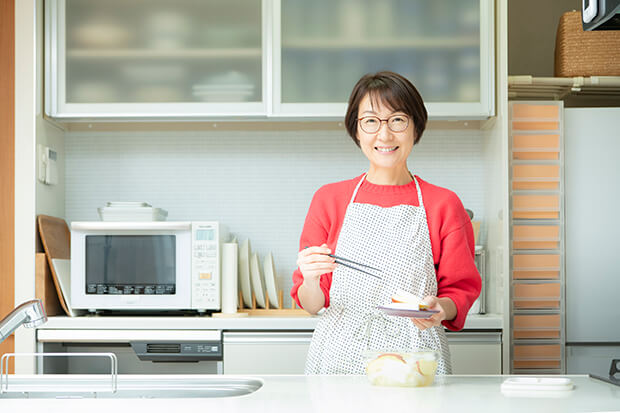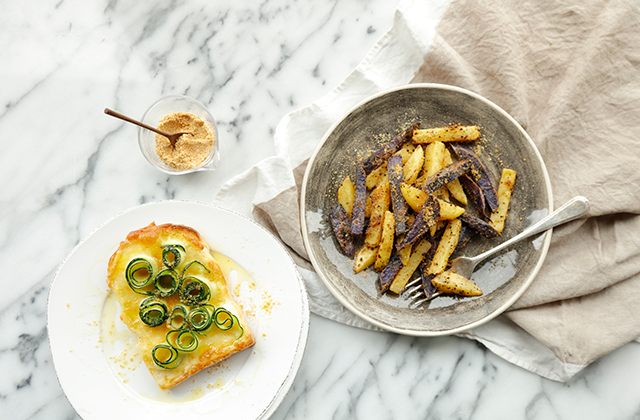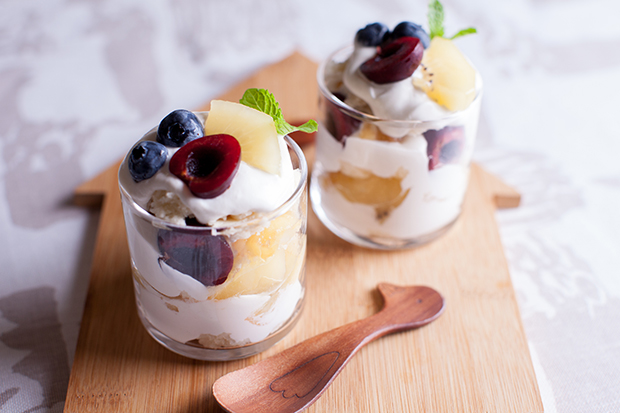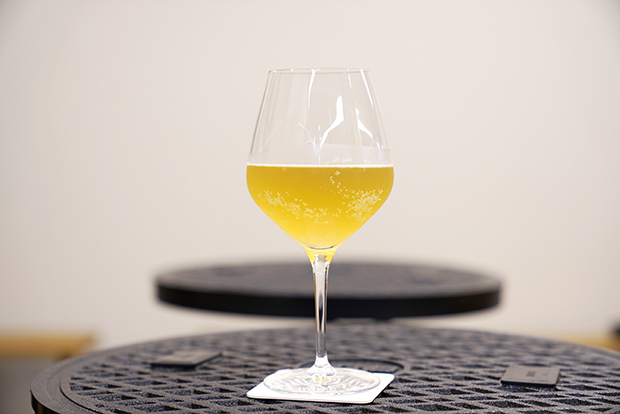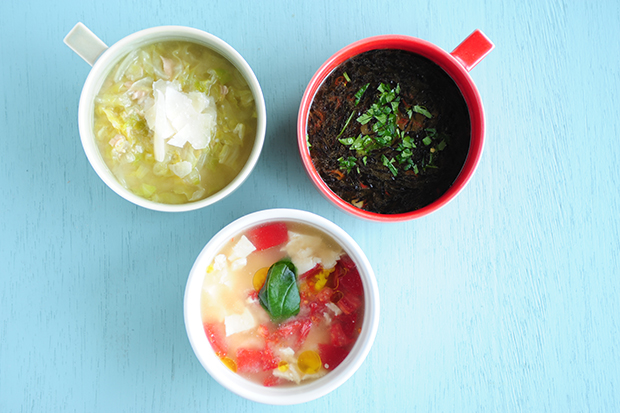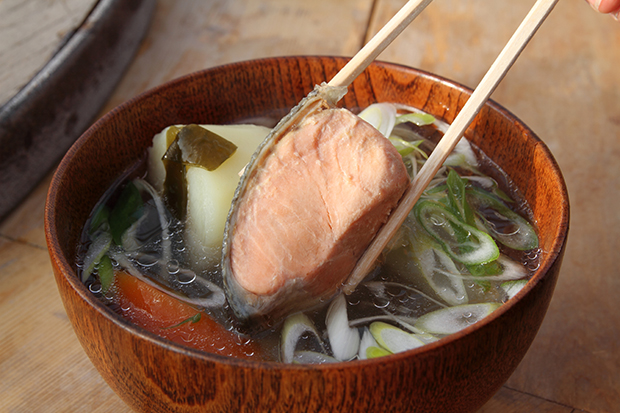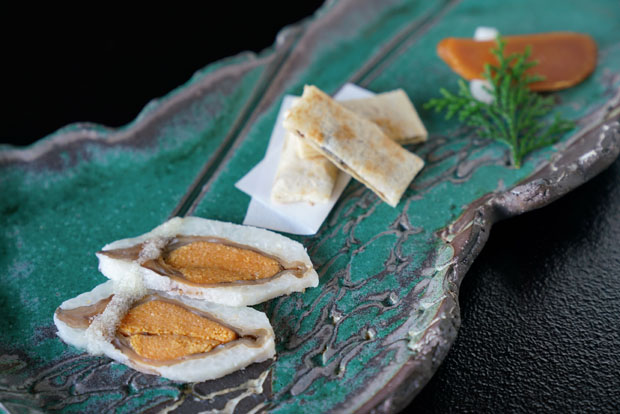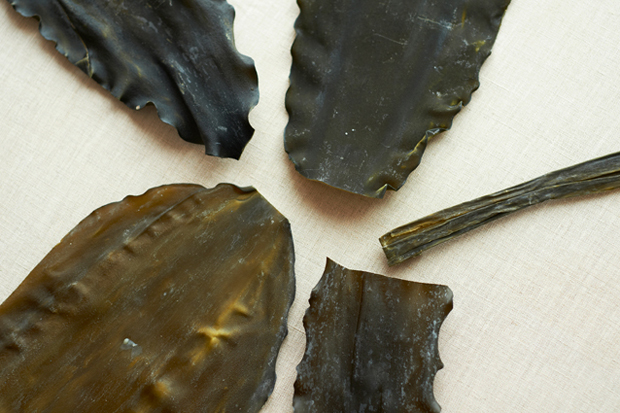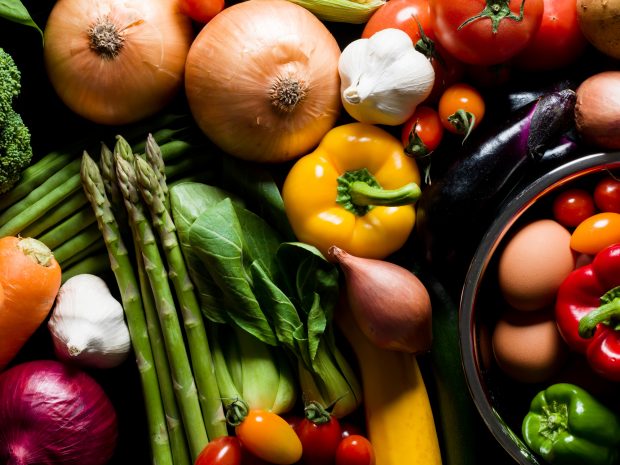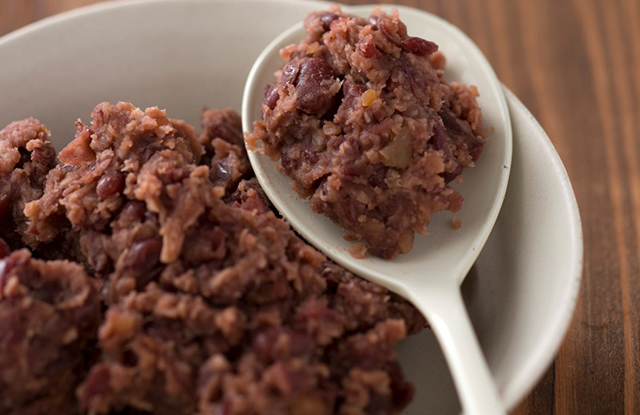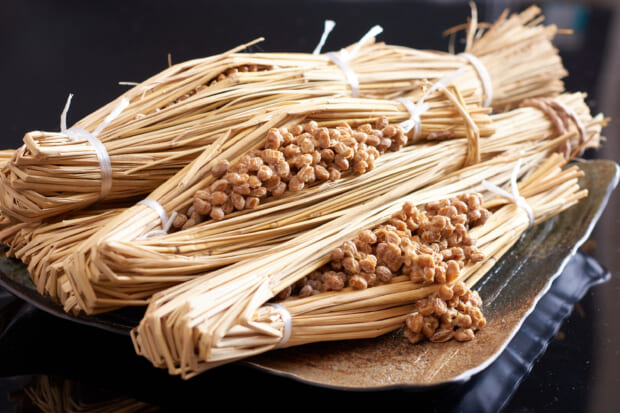An easy way to start your own nukadoko
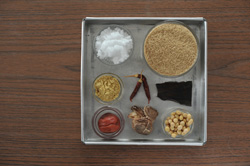
Ingredients
Rice bran…800 grams
Salt…120 grams
Water…650 mL
[Additional ingredients]
Powdered Japanese mustard…40 grams
Pickled ume plums…1 or 2
Red chili peppers… 2 or 3
Kelp…Five or six centimeters
Dried shiitake mushrooms…2 or 3
Dried soybeans…80 grams
Vegetable scraps…As available
Directions
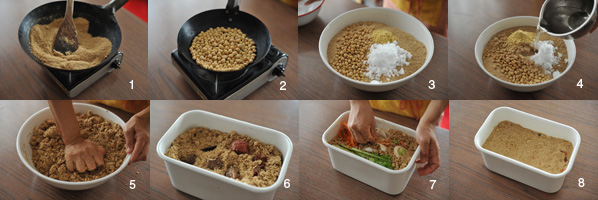
1.Roast the rice bran
Roast half of the rice bran in several batches over a low to medium heat in a frying pan or wok. Mix well to prevent the bran from scorching on the bottom of the pan. Turn off the heat when the bran becomes dry and fragrant. Use the remaining bran without roasting it.
2.Roast the soybeans
Roast the rinsed soybeans over a medium to high heat. Turn off the heat when you hear a popping sound and the surface of the beans is slightly browned.
3.Combine the ingredients
Put the rice bran, salt, powdered Japanese mustard, and soybeans in a large bowl or stock pot.
4.Add water
Add all the water in the ingredients list at once.
5.Mix together
Mix thoroughly from the bottom with your hands to make sure there are no lumps, and get the consistency so that it crumbles when squeezed. If it’s too hard, you can add a little water, but it should be on the firm side as moisture from the vegetables will come out later.
6.Add the remaining additional ingredients
Transfer the mixture to a storage container and add the dried shiitake mushrooms, kelp, picked ume plums, and deseeded chili peppers.
7.Add the vegetable scraps
Bury the vegetable scraps in the rice bran.
8.Leave at room temperature
Flatten the nukadoko and let it ferment at room temperature. Starting from the following day, stir up the nukadoko and replace the vegetable scraps every day or two when they have released all their moisture and have dried out. Taste the vegetable scraps and when they have taken on the flavor of nukazuke, the nukadoko is ready. It normally takes between one and two weeks.
Tips
・The additional ingredients act like a stock that adds umami and flavor to the nukadoko. You don’t have to add all of them, but the Japanese mustard and chili peppers are recommended because they have antibacterial and insect-repellent effects. You can add other things like sansho peppercorns, dried sardines, and dried bonito flakes.
・The vegetable scraps promote the activity of the lactic acid bacteria and are necessary for the nukadoko to ferment. In general, any scraps are fine, such as leftover bits of cabbage, carrot peels and stems, and apple or persimmon skins. However, you should avoid bitter or astringent scraps such as eggplant peels.
・Enamel or plastic storage containers are best for a nukadoko. Choose a container with plenty of room for maintaining the nukadoko.
・If a lot of moisture comes out from the vegetables, add more rice bran, dried shiitake mushrooms, or other additional ingredients that will absorb the moisture. If the taste becomes too sour, adding commercially available nukamiso mustard will mellow out the taste.
Various types of nukazuke vegetable pickles

Ingredients and Directions
Cabbage…Separate the core from the leaves and pickle separately.
Pickling time: Three to six hours
Myoga ginger…Pickle without any particular preparation.
Pickling time: Three to six hours
Cucumber…Cut off the bitter stem end and pickle.
Pickling time: Three to six hours
Turnip…Peel if you prefer and rub with a little salt before pickling.
Pickling time: Six to nine hours
Celery…Remove the stringy fibers and cut into appropriate-sized pieces before pickling.
Pickling time: Six to nine hours
Carrot…Peel if you prefer and rub with a little salt. Cut lengthwise if large and then pickle.
Pickling time: Eight to 12 hours
Eggplant…Peel in places and rub with a little salt. Cut lengthwise if large and then pickle.
Pickling time: Eight to 12 hours
・The pickling times are only benchmarks. They will vary depending on the season.
・After taking the vegetables out from the nukadoko, wash off the bran and cut them into bite-sized pieces to eat.
Nukazuke meat roll-ups
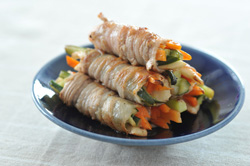
Ingredients (two-person serving)
Nukazuke (cucumbers, carrots, etc.)…As needed
Thinly sliced pork loin or boneless rib…Six to eight slices
Salt and pepper…As needed
Oil…As needed
Directions
1.Cut the nukazuke into thin strips about seven centimeters long.
2.Spread the meat slices out, sprinkle with salt and pepper, and roll them up with the nukazuke from Step 1 in the middle.
3.Heat the oil in a frying pan over a medium heat, and turn the roll-ups as they cook.
▶Sake Lees & Sake Kasu: Fermented Flavor in Daily Cooking
▶Natto: Japan’s Fermented Tradition with Easy Recipes

